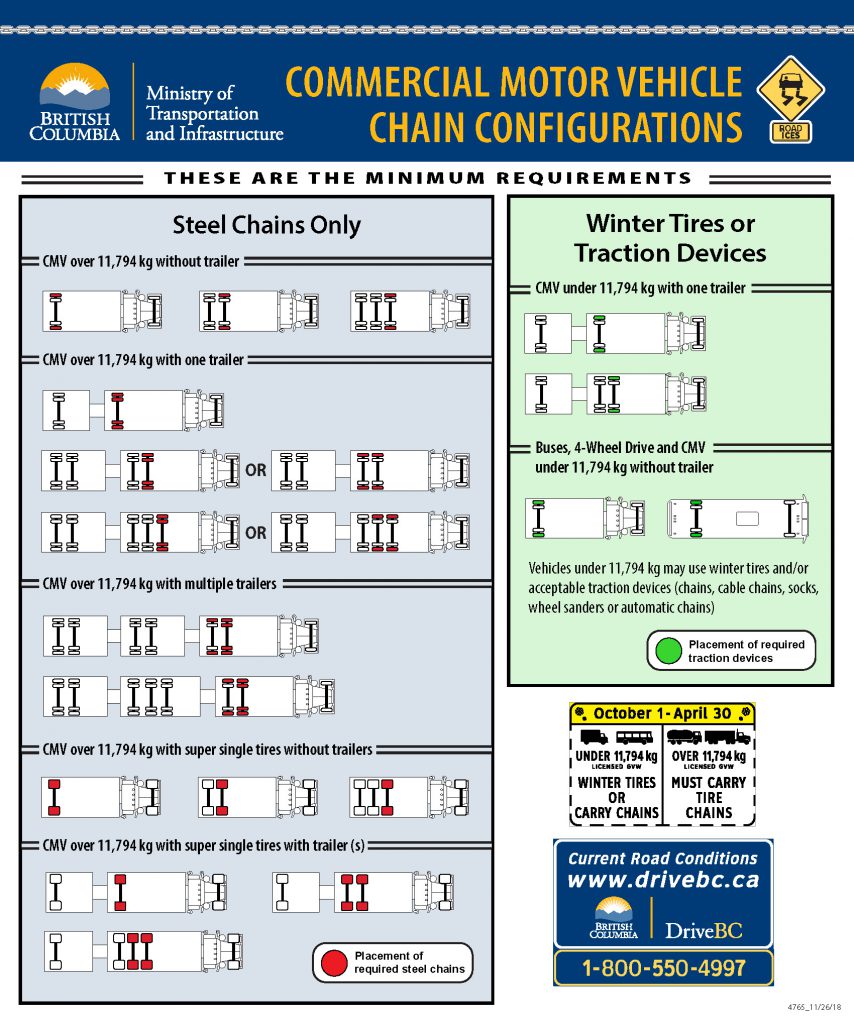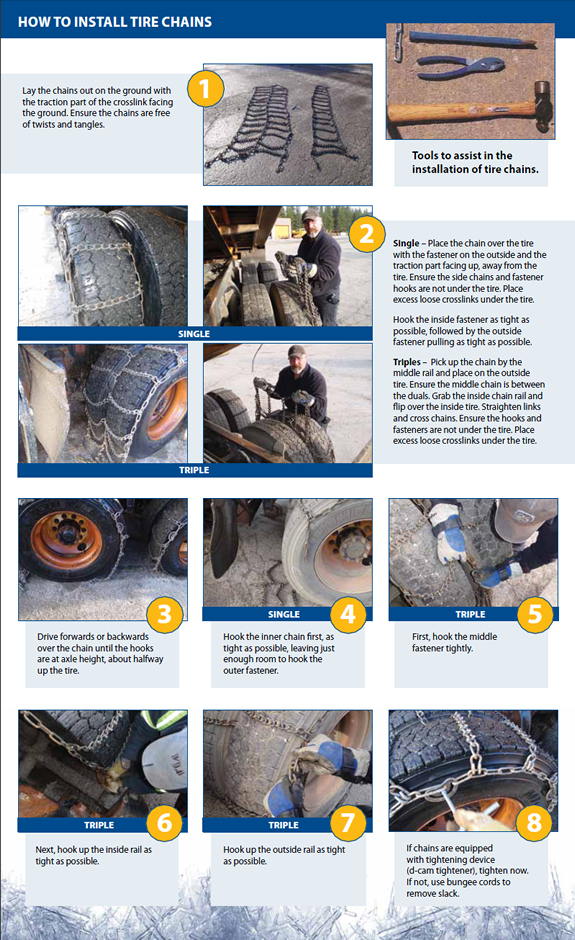When the Commercial Vehicle Safety Enforcement (CVSE) team shared a blog and video on the eight steps to installing winter tire chains on a passenger vehicle the video became one of our most popular, with about 60,000 views by you. Thanks for that.
Hopefully, you find this one about how to chain up a commercial vehicle as useful as the first video.
A couple of Shift into Winter reminders:
- Always read and follow manufacturer’s directions
- Only install traction devices suited to your vehicle
- Ensure the chains fit and practice installing them prior to driving
If you’re not so much into the moving pictures, here are a couple of infographics that you may find useful.


Must inspect all chains before you need them.
Damaged chains are useless.
Make sure you have a key that matches your chains Cams.
Never put that key in the snow while chaining up!
Just watched the video on installing tire chains on a commercial vehicle, a well filmed production, however I see a mistake in the video. I am in agreement with the slide presentation not the video. When installing triples the center rail should be your first to hook up as it is only a hook, it is the loosest at the time and is easiest to hook, there are no D cams on the side rails in the center and is hard to hook bungees. If the center rail is not tight enough it will crawl over the side wall and you may walk out of your chains. The presentation I am sure is a help to some. Well done!
Thank you for this feedback Mark – we appreciate your expertise and that you’ve shared it here with us!
There is a HUGE DIFFERENCE in tire chains nowadays.
I have 6 sets of the heavy TRYGG chains and a single.
(4 for the drives and 2 for the trailers, 1 for the steering, when the going gets really tough on the Salmo Creston.)
Mind you, it’s not easy to put them on at age 55, but once they are on you are good to go anywhere.
I see these cheap Chinese chains, light, easy to put on, but if you wipe your feet once, you might as well burn yourself a hole so you don’t slide backwards, because you likely ain’t going forwards.
Just sayin.
Do automatic spinning chains still qualify?
Hi Phil,
Automatic spinning chains are still allowable on vehicles less than 11,794 kg. Commercial vehicles with a LGVW of 11,794 kg or greater must use steel link chains.
https://www2.gov.bc.ca/gov/content/transportation/driving-and-cycling/traveller-information/seasonal/winter-driving/commercial
im wondering if the spinning chains controlled from the drivers seat are legal when chain up signs are on if so then are single wheel chains are all that is required
Hi Dennis,
Yes, automatic tire chains are acceptable and do not need to be used in conjunction with wheel chains.
Division 7 — Other Equipment
Definitions
7.001 In this Division:
“commercial motor vehicle” has the same meaning as in Part 2.2 of the Act, but does not include a truck or other motor vehicle with a gross vehicle weight less than or equal to 5 000 kg;
“traction device” means
(a) in the case of a commercial motor vehicle, any of the following, if designed by a manufacturer to increase the friction between a tire and a road surface covered with ice or snow:
(i) subject to section 7.164, studs;
(ii) a wheel sander;
(iii) automatic tire chains;
(iv) a textile tire cover;
(v) 2 circular metal loops connected by strands of steel cable, if both outside tires of a power drive axle of the commercial motor vehicle are equipped with chains;
(vi) chains;
(b) in the case of any other motor vehicle, any device designed by a manufacturer to increase the friction between a tire and a road surface covered with ice or snow.